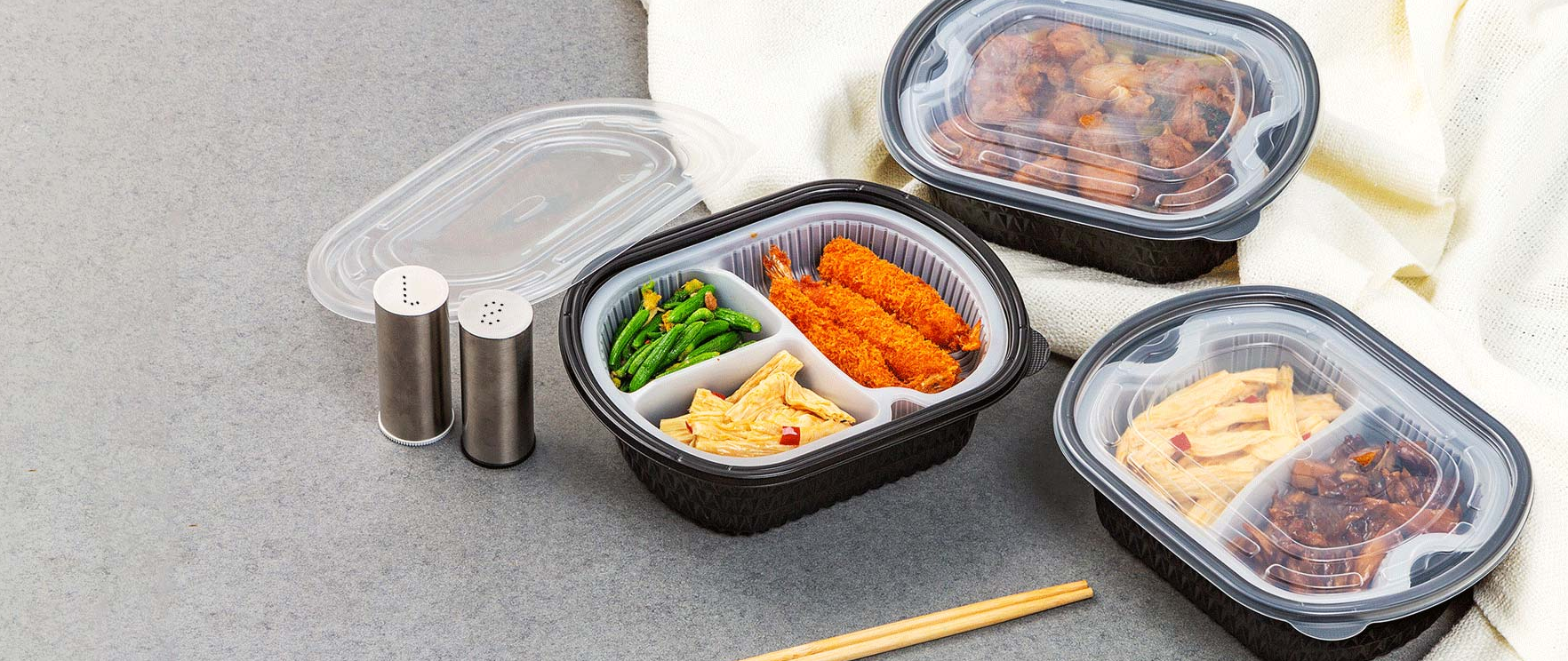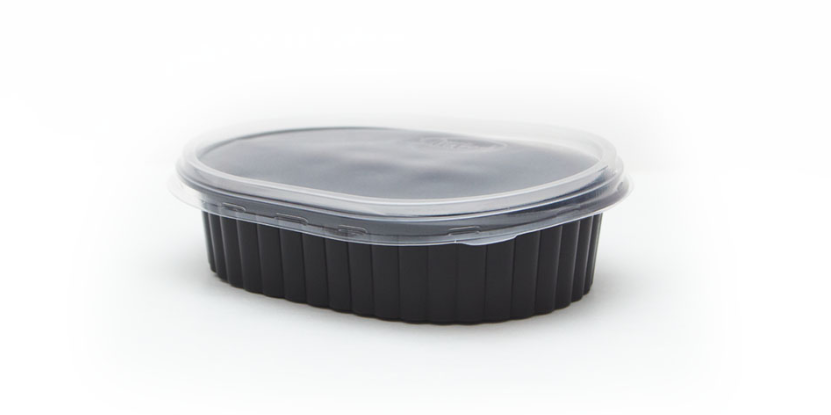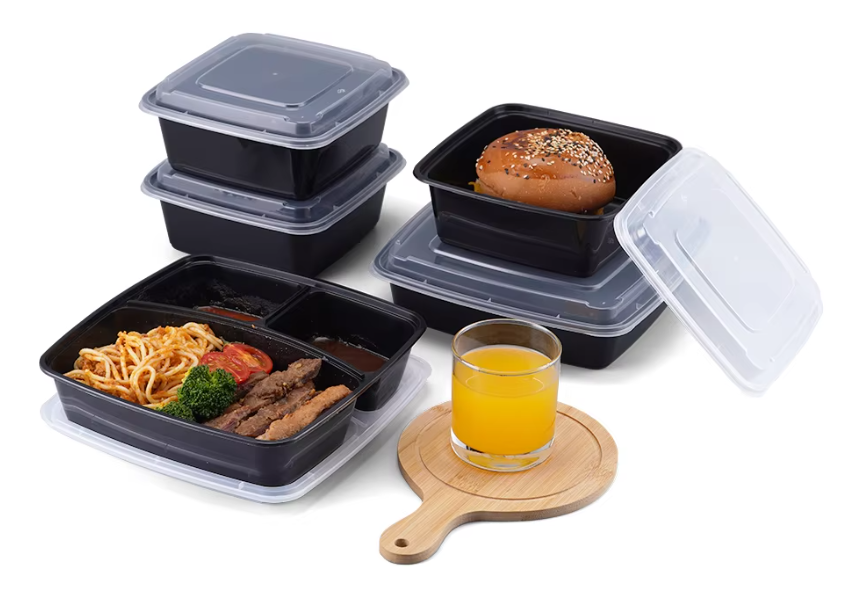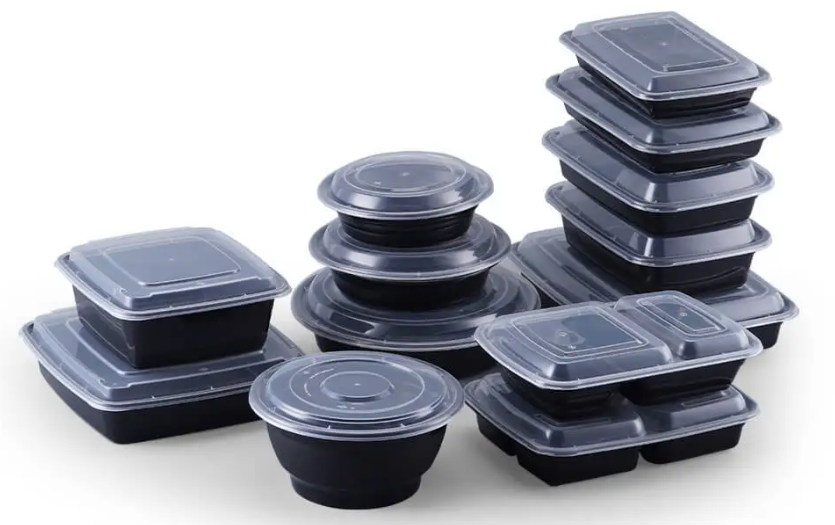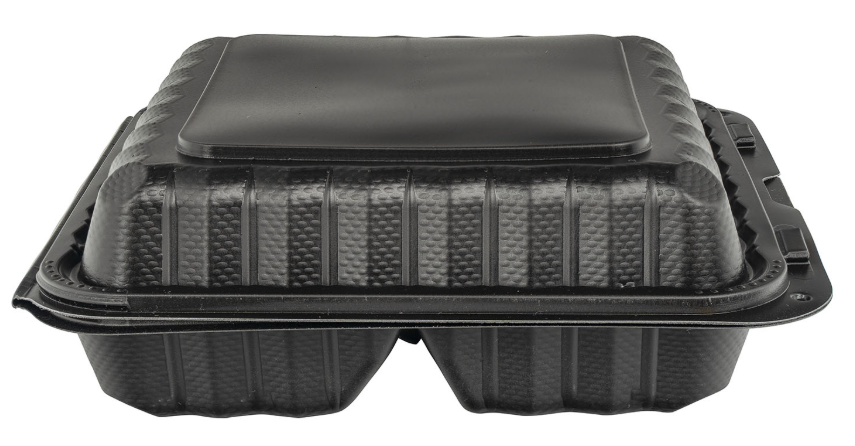The production of microwaveable disposable takeout containers represents a sophisticated manufacturing process that combines advanced polymer science, precision engineering, and stringent food safety requirements to create safe, functional packaging solutions for the modern food service industry. These plastic food containers are made from polypropylene (PP) and are designed for food delivery, durable, stackable, and pressure-proof disposable containers made from high-quality polypropylene (PP), demonstrating the material excellence that forms the foundation of successful microwave-safe container manufacturing.
Understanding Polypropylene: The Foundation Material
Polypropylene (PP) serves as the optimal material for microwaveable disposable containers due to its exceptional combination of safety, thermal stability, and processing characteristics that address the demanding requirements of food contact applications. Polypropylene (PP) — #5 — Most often used for frozen meals and food storage containers, safest for microwaving, establishing PP as the industry standard for microwave-safe food packaging applications.
Polypropylene, a complex plastic, is generally considered safe for humans. It’s FDA-approved for food contact and is often used for containers like those that hold yogurt and butter products. Because it has a high heat tolerance, it’s also often used in packaging of food that can be heated in a microwave. This FDA approval provides manufacturers with confidence in material safety while ensuring regulatory compliance for food contact applications.
Polypropylene is one type of plastic that’s free of BPA, addressing growing consumer concerns about chemical safety in food packaging. The BPA-free characteristic has become increasingly important as health-conscious consumers and regulatory agencies prioritize safety considerations in food contact materials, making polypropylene the preferred choice for microwaveable applications.
The material properties that make polypropylene ideal for microwaveable containers include exceptional chemical resistance, superior thermal stability, and excellent processability through various manufacturing techniques. Polypropylene has excellent moisture resistance and the water absorbs less than 0.01% over 24 hours. Polypropylene resists a wide range of chemicals, including fats, organic solvents, and some non-oxidizing acids, ensuring container integrity when exposed to diverse food types and storage conditions.
Manufacturing Process: Injection Molding Excellence
The production of microwaveable disposable takeout containers primarily utilizes injection molding technology, which provides precise control over material properties, dimensional accuracy, and production efficiency essential for large-scale manufacturing operations. Heating plastic materials until they melt, then injecting the molten plastic into a mold cavity at high pressure where it cools and solidifies. This process is used extensively for manufacturing items from plastics that are both complex in shape and require close tolerances.
The process of injection molding with PP involves several key steps: Material Preparation: PP granules are first dried to remove any moisture that can affect the molding process. Melting and Injection: The dried PP granules are fed into the injection molding machine, which is heated and melted. The molten PP is then injected into a mold cavity under high pressure. Cooling and Solidification: Once the mold is filled, the molten PP is cooled and solidified to form the desired shape. The cooling time is critical for maintaining the dimensional accuracy of the part.
Temperature control represents a critical aspect of polypropylene injection molding for food containers. When working with PP, key considerations include maintaining the appropriate temperature settings, ensuring consistent pressure during injection, and using molds designed specifically for PP to prevent defects. PP’s typical injection molding temperature ranges between 180°C to 240°C. Maintaining this range helps prevent issues such as warping and incomplete mold filling. Proper temperature settings ensure the PP melts uniformly and flows smoothly into the mold cavity.
Quality control during the injection molding process ensures consistent material properties and dimensional accuracy across production runs. The advantages of injection molding include fast production speeds, high efficiency, a high degree of automation, and the ability to produce intricate shapes. By designing the molds and controlling process parameters carefully, it is possible to achieve high-quality products with precise dimensions and smooth surfaces, enabling manufacturers to achieve the quality standards required for food contact applications.
FDA Compliance and Food Safety Requirements
Manufacturing microwaveable disposable takeout containers requires comprehensive compliance with FDA regulations governing food contact materials, ensuring safety through rigorous material approval processes and ongoing quality verification. Many injection-molded food containers are made from safe, FDA-approved materials like polypropylene and PET, designed specifically for food contact and safety, demonstrating the regulatory foundation supporting safe container production.
The FDA regulates the safety of ingredients added directly to food and substances that come into contact with food, such as those added to packaging materials, cookware or containers that store food. Food manufacturers are responsible for marketing safe foods. Ingredients added directly to food and substances that come into contact with food are generally held to the same safety standard—there must be a reasonable certainty of no harm under the conditions of its intended use.
FDA compliance requirements encompass comprehensive material characterization, migration testing, and safety validation that demonstrates containers meet safety standards under intended use conditions. However, any package used in a food contact applications must be suitable for the intended use under FDA’s good manufacturing practices (GMP) regulation found in Title 21 of the Code of Federal Regulations (CFR), Section 174.5 (“General provisions applicable to indirect food additives”). While FDA has not issued specific regulations concerning microwaveable food packaging, the intended use of a product is an important factor in establishing official FDA clearance of food contact substances under the Food Contact Notification (FCN) program.
“FDA compliant” means that a material meets all of the FDA’s guidelines for safe, direct contact with food. It’s essentially an official way of saying a material is “food grade.” To be FDA compliant, a material must be able to withstand the environment it will be used in, requiring manufacturers to validate performance under expected use conditions including microwave heating applications.
Design Considerations for Microwave Safety
Container design plays a crucial role in ensuring microwave safety and optimal performance, requiring careful consideration of wall thickness distribution, thermal expansion characteristics, and venting capabilities that prevent pressure buildup during heating. When designing parts for injection molding, following proper guidelines helps ensure manufacturability, cost efficiency, and product performance. Key considerations include: Wall Thickness: Keep the wall thickness as even as possible. For PP, around 1.5–3.5 mm works well. Sudden changes cause warpage or sink marks, so smooth transitions are better.
Microwave compatibility requires containers to maintain structural integrity when exposed to thermal cycling, food contact, and electromagnetic energy without compromising safety or functionality. In general, to be microwave safe, a product should have a temperature tolerance of at least 250 degrees Fahrenheit, establishing performance criteria that container designs must achieve through material selection and structural optimization.
Ventilation design represents a critical safety consideration for microwaveable containers, enabling steam release that prevents dangerous pressure buildup during heating. Need a lid with vent holes? No problem. Many of these sizes are available with ventable lids that allow steam to escape – keeping food hot without getting soggy. And since the lid and base are case packed together, you never need to worry about running out of one before the other.
Container geometry optimization includes considerations for thermal stress distribution, electromagnetic energy penetration, and user safety that ensure reliable performance across diverse microwave applications. Draft Angles: Always add draft for easy part release. About 1–2° per side is enough for PP, but go higher if the surface has texture or the part is deep, demonstrating the precision engineering required for successful container manufacturing.
Quality Control and Testing Protocols
Comprehensive quality control systems ensure microwaveable containers meet performance specifications through rigorous testing protocols that validate thermal stability, migration compliance, and structural integrity under intended use conditions. We check the quality of our products at every step of the production process. This ensures that you receive only the best microwave-safe food containers, demonstrating industry commitment to quality excellence.
Migration testing represents a fundamental requirement for food contact applications, ensuring containers do not release harmful substances when exposed to food products and elevated temperatures. The guidance is in the form of the FDA’s recommendations on chemistry information required for food contact surfaces. Before a product goes to the market, the FDA recommends that this guidance be used by a company to determine proper migration testing protocol for their food container.
Thermal performance validation includes testing protocols that verify containers maintain structural integrity and dimensional stability when exposed to microwave heating cycles. And don’t worry about the microwave warping their shape. They bounce right back to their original form, so the lid will always fit, demonstrating the performance characteristics that quality testing protocols must validate.
Mechanical property testing ensures containers provide adequate strength, impact resistance, and dimensional stability throughout their intended use cycles. This method not only allows for the mass production of lightweight and durable containers but also ensures compliance with food safety standards. Key benefits include reduced contamination risks and enhanced shelf life for food products, highlighting the comprehensive benefits achieved through effective quality control programs.
Production Optimization and Efficiency
Manufacturing efficiency optimization requires sophisticated process control, automated handling systems, and comprehensive production planning that maximizes output while maintaining consistent quality standards essential for commercial success. Efficient Supply and Timely Production: We manufacture all containers in our own facility and are capable of handling large, urgent orders. This gives us full control over the production schedule and quality, ensuring that your orders are delivered on time, every time.
Cost management strategies encompass material optimization, process efficiency improvement, and waste reduction initiatives that enable competitive pricing while maintaining quality standards. One of PP’s primary advantages is its low cost. It is cheaper to produce and process than many other plastics, making it an economically attractive option for manufacturers, providing fundamental cost advantages that support commercial viability.
Automation integration includes robotic material handling, automated quality inspection, and process monitoring systems that minimize labor requirements while maximizing consistency and efficiency. The slippery surface makes PP has a lower coefficient of friction. That characteristic facilitates the release of injected molded parts from tooling, which helps to speed cycle times and reduce overall costs, demonstrating material properties that support manufacturing efficiency.
Essential Production Parameters for Microwaveable Containers:
-
Material Preparation: Proper drying of PP granules to prevent moisture-related defects
-
Temperature Control: Maintaining injection temperatures between 180°C-240°C for optimal processing
-
Pressure Management: Consistent injection pressure ensuring complete mold filling
-
Cooling Optimization: Controlled cooling cycles maintaining dimensional accuracy
-
Quality Monitoring: Real-time process monitoring preventing defects and ensuring consistency
-
Mold Design: Specialized tooling optimized for PP processing and part geometry
-
Ventilation Features: Integrated venting systems preventing pressure buildup during microwave use
Scalability considerations include production capacity planning, equipment utilization optimization, and supply chain coordination that enable manufacturers to meet market demand while maintaining operational efficiency. The shrinkage rate of this material ranges from 1% to 3%, but could increase with wall thickness, requiring precise process control to achieve consistent dimensional accuracy across production volumes.
Environmental Considerations and Sustainability
Sustainable manufacturing practices increasingly influence container production, requiring consideration of recycled content integration, energy-efficient processing, and end-of-life recyclability that address environmental concerns while maintaining performance standards. Certified BPA and CFC Free, CuBEware microwaveable containers are reusable and fully recyclable. RECYCLABLE TYPE 5PP. Better Branding: Reduce your carbon footprint as well as your customers’ carbon footprint with these reusable containers.
Recycling compatibility represents an important consideration for disposable container design, ensuring materials can be effectively processed through existing recycling infrastructure. CuBEware take out containers use about 20% less material yet quality is uncompromised. Extremely strong, durable and reusable, and after a long life they are 100% recyclable. Not only can these be used again and again, but they retain their shape and integrity even after tons of use. CuBEware plastics can go from freezer to microwave to the dishwasher without any issues.
Material efficiency optimization includes design strategies that minimize material usage while maintaining structural performance, supporting both cost reduction and environmental objectives. This food container is made from Degradable Flexible Polypropylene material, making it a sustainable choice for conscious consumers. Unlike traditional plastics that can linger in the environment for centuries, our container is designed to break down over time, minimizing its environment impact, demonstrating advancing sustainability technologies.
Market Applications and Customer Requirements
Understanding market applications guides production strategies, enabling manufacturers to optimize container designs for specific food service segments including restaurants, delivery services, meal preparation, and retail applications. We manufacture and supply a variety of disposable and microwavable plastic food containers for food service, restaurants and takeout. Explore our microwave safe plastic takeaway containers and get a quote today!.
Customer requirements vary significantly across market segments, requiring flexible manufacturing capabilities that accommodate diverse size requirements, performance specifications, and aesthetic preferences. They are designed with divided sections, which are perfect for meal prepping and packaging hot, cold, and solid food, demonstrating specialized design features that address specific application needs.
Regulatory compliance across international markets requires understanding of diverse standards, testing protocols, and documentation requirements that enable global market access. With all of the possible dangers, it’s critical to the safety and satisfaction of your guests that you provide the right container. In this article and video, we’ll review the most common types of food packaging that are safe for use in the microwave and which should never be put into the microwave.
Customization capabilities include branding options, size variations, and specialized features that enable manufacturers to serve diverse customer requirements while maintaining production efficiency. Custom Printed Plastic Food Containers: We offer custom designs on food packaging for our products. If you provide your logo or design, we can print it on takeaway food containers that meet your requirements, demonstrating value-added services that support customer differentiation.
Conclusion: Manufacturing Excellence for Safety and Performance
The production of microwaveable disposable takeout containers requires comprehensive integration of material science expertise, advanced manufacturing technology, and rigorous quality control systems that ensure products meet demanding safety and performance requirements. Success in this market depends on thorough understanding of FDA regulations, polypropylene processing optimization, and customer application requirements that guide design and production decisions.
Manufacturing excellence emerges from continuous investment in technology advancement, process optimization, and quality improvement initiatives that maintain competitive advantages while supporting customer satisfaction and regulatory compliance. The combination of polypropylene’s inherent safety characteristics, advanced injection molding technology, and comprehensive quality systems enables production of containers that serve the growing market for convenient, safe food packaging solutions.
Future success requires ongoing attention to sustainability considerations, regulatory evolution, and market trends that influence customer preferences and competitive dynamics. Manufacturers demonstrating leadership in safety, quality, and environmental responsibility will continue achieving market success while contributing to safer, more convenient food service operations that benefit consumers and the broader food industry.

